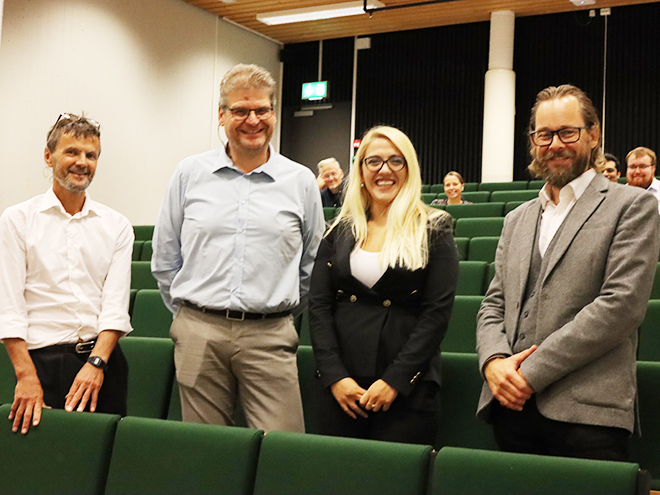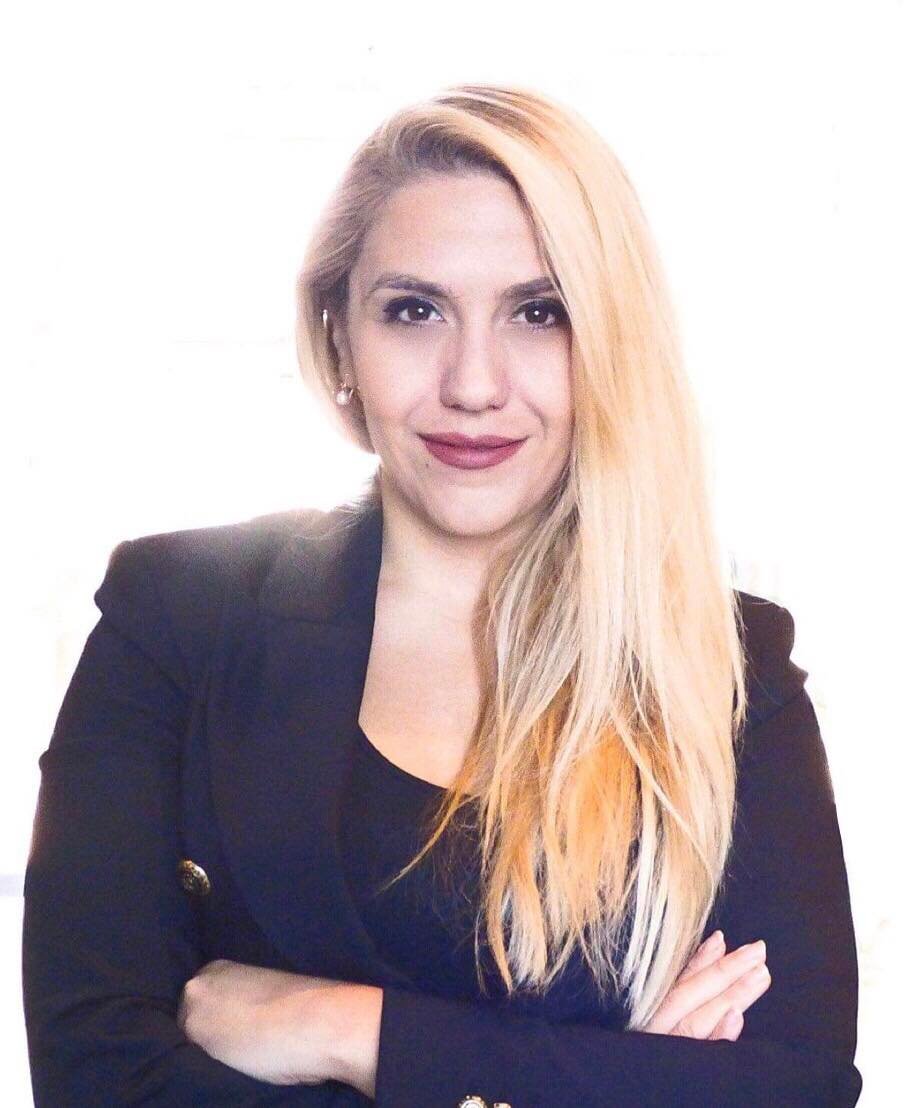In my thesis titled “Co-designing cooperative artifacts with MACI people - A study of empowering practices and artifacts in rehabilitation and co-design.” I focused on understanding and gaining knowledge on a complex concept such as “empowerment” and investigating the ways to empowerment in two equally important contexts—first, patient empowerment in rehabilitation.
Second, empowerment of people with Mild Acquired Cognitive Impairments (MACI) in Participatory Design (PD) sessions in which cooperative artifacts for MACI's empowerment in rehabilitation are co-designed.
Widely used word
Empowerment is quite a buzzword in today's society, where we have different social groups that strive for further empowerment. However, the concept is not new, and in different moments in history, different issues have attracted empowerment discussions. In previous literature, there is a discussion on the complexity of empowerment as a concept, and there is no unified definition of what empowerment means.
My focus on empowerment was more on opening the black box of the concept and trying to find a way how to operationalize and how to study empowerment. For this, I based my understanding of empowerment in the work of Zimmerman, and Warschausky (1998).
They define empowerment as a multi-level, and multi-dimensional construct where empowerment levels are: the individual, organization, and society level, and the dimensions are: empowerment values, empowering practices, and empowerment outcomes.
Practices are the ones that contribute to outcomes. Values are the underlying will for empowerment, and outcomes are the results of the empowerment. In an investigation of more modern development and literature on empowerment, I have expanded their model with another dimension: the empowering artifacts, that support practices and contribute to empowerment outcomes.
Thus, in my study, I investigate empowering practices by applying participatory design methods and some more ethnographic investigation methods to discuss possible practices that will bring desired outcomes in the two contexts of my interest.
An operational model of empowerment
Patient empowerment is a very relevant topic nowadays, and policies are put in place to support such initiatives. I have studied patient empowerment in rehabilitation, and as a case study, I had specifically the one of cognitive rehabilitation.
I have investigated practices that can contribute to patients' participation in care, understanding, and control of their care process. One of the main conclusions of the thesis is the alignment of the empowerment discussion with the necessity for cooperation between patients and healthcare practitioners.
Looking at the empowerment practices with a cooperative work perspective between patients and healthcare practitioners helps keep the two groups in focus. I have developed an operational model of empowerment for patient empowerment that highlights best practices that can be applied to further patient empowerment in rehabilitation and other medical domains.
As I stated earlier, I studied patient empowerment in rehabilitation in the case of cognitive rehabilitation. This rehabilitation program is offered to people who suffer cognition challenges after an Acquired Brain Injury (ABI). ABI could have been caused due to traumatic brain injuries (TBI) such as falls or accidents or non-traumatic brain injury such as stroke, brain cancer etc.
The level of severy can variate. I focused on what is defined as the MACI people, people who have little to no physical problems after ABI but have mild cognition challenges associated with memory problems, attention, fatigue, slow reaction, and might feel overwhelmed in crowded places.
Usually, this is called the invisible epidemic because MACI people are usually overlooked due to a lack of physical disability. I was concerned with supporting them in their rehabilitation through the help of technology and especially in empowering them in the design process of technologies that are meant for them.
I studied practices that contribute to empowering this user group in actively participating in the design process. I have developed a technique that should support this user group in designing processes and negotiating with their healthcare practitioner. The method is focused on balancing powers in a situation where healthcare practitioners are more knowledgeable about the processes, are structurally more powerful in a paternalistic healthcare system, and have higher cognition abilities.
Important to involve users in the design process
The findings of my thesis in this context describe practices to involve this user group in design, but mostly they bring to the designers' attention this user group and propagate their needs as a way to support them more in the future.
The method we call EquiN has been used in co-design with MACI but is theoretically based, consists of three phases, and can be applied in co-design or co-discussion between groups that have differences in power based on differences in knowledge, social structures, or abilities.
The fields of study that I base my research on are Participatory Design (PD) and Computer Supported Cooperative Work (CSCW). The former is a design approach that started in Scandinavia in the 70s, intending to empower workers to be involved in the decision-making regarding workplace technologies.
The latest is a field concerned with understanding cooperative work characterized by interdependence at work and people working toward common goals and design technologies that support such cooperation. In today's world, where more discussions of power imbalance have emerged and with the massive specialization of what people do, both PD and CSCW are relevant and have a strong contribution.
I contribute in both fields, and I promote in my thesis the application of co-design for cooperation - Sitting together in co-discussion, co-designing, co-creating the ways we interact so we can achieve higher cooperation. In a society where the teacher and students are urged to cooperate, where patients and healthcare practitioners are urged to cooperate, where managers and workers are urged to cooperate, where companies in a chain are urged to cooperate, co-design for cooperation becomes crucial.
A new course at Ostford University College: Co-design for Cooperation
In Spring 2022 we start the course on Co-design for Cooperation as part of the Computer Science Master Studies for the first time. We want to prepare students for the challenges of today's digital society and how they can become more aware citizens that will promote cooperation and harmony among all parts of our society as together we can do better things and achieve co-empowerment.
Klaudia Carcani defended her Doctoral Degree (PhD. Philosopiae Doctor) at the Department of Informatics, Faculty of Mathematics and Natural Sciences, University of Oslo on the 9th September 2021. She was honored to have in her committee Prof. Christian Heath - King's College London, UK, Prof. Ina Wagner - Vienna University of Technology, Austria, and Prof. Margunn Aanestad - the University of Agder and the University of Oslo, Norway.

From Carcani´s disputation 9th of September 2021. In the photo frem left: Prof. Jo Herstad - University of Oslo, assoc. prof Frank Becker - Sunnaas Rehabilitation Hospital and the University of Oslo, Klaudia Carcani and assoc. prof and dean Harald Holone - Østfold University College. Photo: Privat.
Reference
Zimmerman, M. A., & Warschausky, S. (1998). Empowerment theory for rehabilitation research: Conceptual and methodological issues. Rehabilitation psychology, 43(1), 3.
Klaudia Carcani (2021). Co-designing cooperative artifacts with MACI people: A study of empowering practices and artifacts in rehabilitation and co-design.

Klaudia Carcani
Assistant Professor
Department of Computer Science and Communication
Østfold University College
